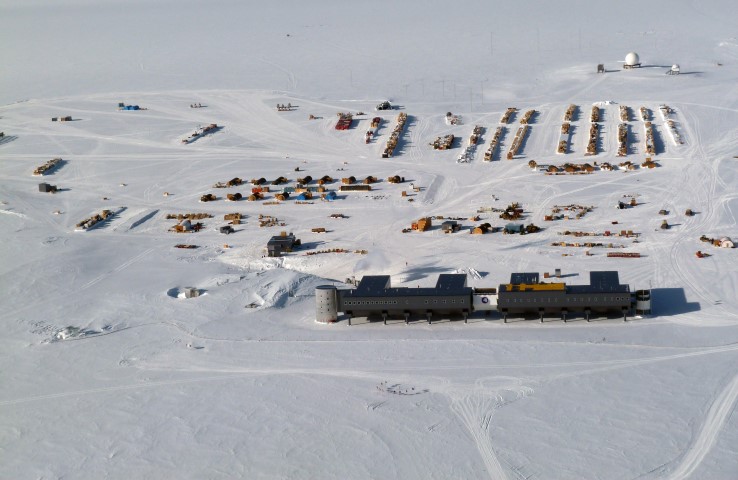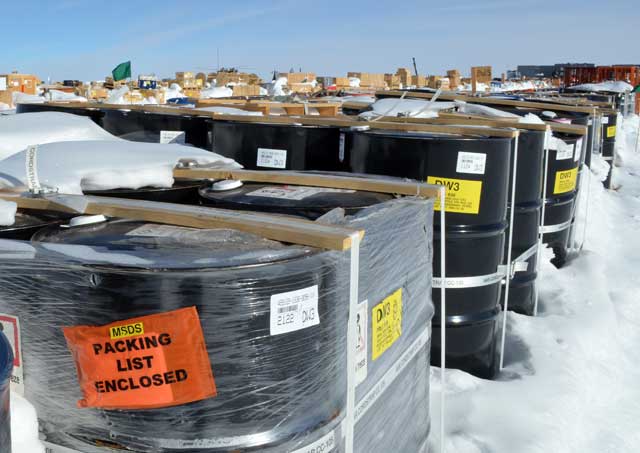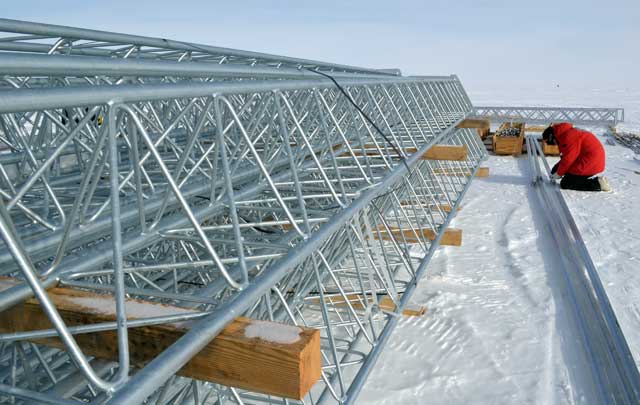|
Page 3/3 - Posted October 4, 2013
Growing into the futureThe 2013-14 season at South Pole is just around the corner. The plan is to cap the population at about 150 people. “I think we can get small,” Coughran said. He has a few things working in his favor. In recent years, the South Pole Traverse has proven itself to be a reliable way of transporting fuel and some limited cargo from McMurdo Station “It’s a big change,” Coughran noted. The traverse reduces the amount of flights that are needed to deliver fuel, allowing the station to operate on a single day shift rather than a full 24-hour tempo. One drawback thus far has been moving oversized cargo overland, he explained. A decade-worth of unused construction material sits on raised berms less than a mile from the station, alongside rows of other materials that have accumulated over the years. There’s about 125 acres of “stuff” waiting to be moved north, according to Martinez. “Space has always been an in issue here,” he said. Snow is also always an issue. Some outlying science buildings are slowly being swallowed by the inevitable drift. NOAA’s Atmospheric Research Observatory Fortunately, there are no plans to add more major science projects to the South Pole Station footprint in the near-term. Last year, an antenna array that monitors auroral activity called SuperDARN In reality, there’s no place to plug in another project, according to Sullivan. “We are definitely making a shift to operations and maintenance science,” he said. “We’re really power limited. We couldn’t take another SPT or IceCube.” In fact, Coughran would like to see the station footprint shrink further by consolidating buildings and operations – breaking down the departmental barriers that went up as the station population climbed. He would prefer to go back to the days when work was more goal-oriented than job-oriented. “Once we shift those paradigms, I think we can operate with a lot fewer people,” Coughran said. “We’ll have some fine-tuning to do in the coming years.” |



For USAP Participants |
For The Public |
For Researchers and EducatorsContact UsU.S. National Science FoundationOffice of Polar Programs Geosciences Directorate 2415 Eisenhower Avenue, Suite W7100 Alexandria, VA 22314 Sign up for the NSF Office of Polar Programs newsletter and events. Feedback Form |




